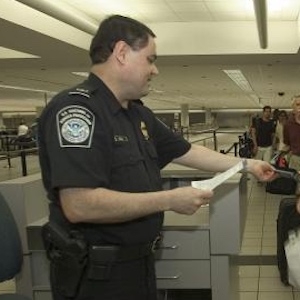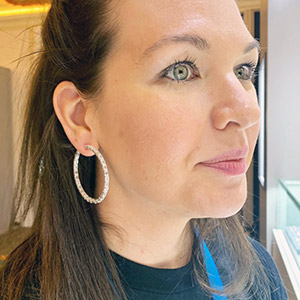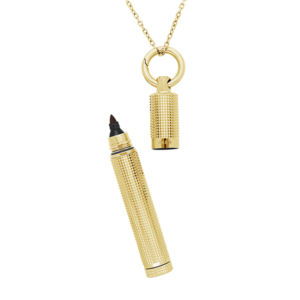
As Russia’s invasion of Ukraine enters its second year, the United States is looking to tighten its regulations on Russian diamonds—and eliminate the rule that allows the importation of Russian-mined diamonds cut and polished elsewhere.
Belgian officials who spoke with Politico last week said that the European Union and United States hope to develop a “‘watertight’ traceability system” for diamonds as a way to limit Russian gems.
But people who have spoken with U.S. and EU officials believe they are seeking a traceability requirement, where the onus would be on importers to prove their diamonds didn’t come from a Russian mine.
If enacted, it would mean that U.S. companies could only import diamonds if they have proof of their non-Russian origin.
“The Belgium government has suggested an international traceability requirement,” says Tom Neys, spokesperson for Antwerp World Diamond Centre, the Belgium industry group. “The proposal would mean that every company who wants access to the U.S., EU, and other G-7 markets would need to provide provenance information.”
He adds that a lot of details are still being discussed, including a possible size cutoff and which forms of proof would be acceptable.
If enacted, the requirement is expected to be phased in gradually and would not apply to all sizes of diamonds, at least in the initial stages.
Unlike the Kimberley Process, which mandates specific documents accompany rough diamond shipments, importers could use different methods to certify their gems’ non-Russian origin. But they would have to offer some form of proof or they’d risk not being allowed to import their gems or having them confiscated. Anyone caught lying or offering false information to U.S. Customs and Border Protection officials could face serious penalties.
“Europe and North America together represent 70% of the world market for natural diamonds,” one anonymous official told Politico. “Based on this market power, we can ensure the necessary transparency in the global diamond sector and structurally ban [Russian] blood diamonds from the global market.”
The proposal is being discussed as the Ukraine war nears its one-year anniversary on Feb. 24. While sanctions against Russian diamonds—particularly the rules banning trade in dollars—are believed to have initially hurt the country’s gem sales, many think its customers have since discovered ways to circumvent them.
Analyst Paul Zimnisky estimates that sales from Russian miner Alrosa fell to $3.2 billion in 2022, from $4.2 billion in 2021. (The company, which is one-third owned by the Russian government, no longer provides sales totals.) By contrast, he estimates that De Beers’ sales rose last year to $5.8 billion, compared with $4.8 billion in 2021.
“De Beers clearly benefited,” he says. “Their sales went way up, while Alrosa’s fell.”
He believes that Alrosa’s current customer base is limited to 10 to 15 mostly Indian companies that have a large capital base and offices in Dubai and generally pay in euros.
Current rules from the Office of Foreign Assets Control (OFAC) of the U.S. Department of the Treasury prohibit direct dealings with Russian diamond entities—including Alrosa and Grib, the smaller producer owned by sanctioned VTB Bank. But the rules allow for the importation of Russian-mined diamonds that have undergone “substantial transformation”—which, in this case, means they were cut and polished—in other countries. Critics have called this a loophole, since most Russian-mined diamonds are manufactured in India.
Currently, there are not many ways to prove where a diamond came from, though it’s possible a paper trail could satisfy the requirements. De Beers has developed a tracking system called Tracr and is offering a “code of origin” for its diamonds—but it’s said little on the subject since announcing plans last May to make all its diamonds trackable.
De Beers spokesperson David Johnson tells JCK: “We are now registering more than half of our rough diamond supply value on Tracr at every sight. Code of origin has grown rapidly and is now offered through retail partners in all major consumer markets.”
Jewelers Vigilance Committee (JVC) president, CEO, and general counsel Tiffany Stevens urges the trade to devote “serious focus” to this issue.
“It makes sense that the U.S. government and allies around the world would escalate the heat of sanctions to try to end the ongoing unjustified war in Ukraine,” she says. “This is a complex time for many industries, including ours. The JVC encourages the trade to ask direct questions of their suppliers about sourcing, engage with due diligence standards, and plan to dedicate additional resources to sanctions compliance.”
(Photo courtesy of U.S. Customs and Border Protection)
- Subscribe to the JCK News Daily
- Subscribe to the JCK Special Report
- Follow JCK on Instagram: @jckmagazine
- Follow JCK on X: @jckmagazine
- Follow JCK on Facebook: @jckmagazine







